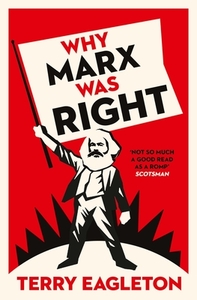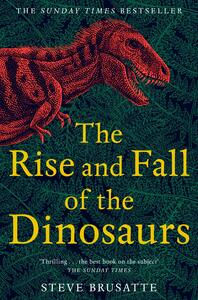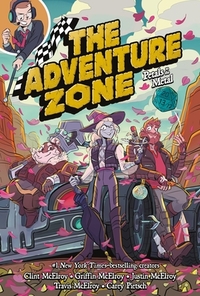Take a photo of a barcode or cover
mars2k's Reviews (234)
Still, You Are An Artist is a book I would gladly recommend to amateurs and professionals alike – anyone looking to experiment with creative processes and express themselves in some way. It’s a nice, easy read with plenty of inspiration. I’ll almost certainly revisit it myself at some point :)
Moderate: Death, Racism, Terminal illness
Minor: Cancer, Misogyny, Slavery, Violence, Police brutality, Stalking, Murder
Graphic: Death, Domestic abuse, Emotional abuse, Violence, Blood, Murder
Moderate: Animal death, Incest, Infidelity, Mental illness, Misogyny, Panic attacks/disorders, Sexual assault, Sexual content, Terminal illness, Torture, Death of parent
Minor: Child abuse, Drug abuse, Gore, Gun violence, Racial slurs, Racism, Slavery, Suicidal thoughts, Suicide, Forced institutionalization, Vomit
The Dinosaur Encyclopedia taught me more about the history of palaeontology than about dinosaurs themselves, but that’s not a bad thing. This isn’t really a book I’d recommend to a kid looking for an introduction to prehistoric fauna but it’s definitely an interesting read for palaeo enthusiasts like myself, especially after having read Benton’s more recent book Dinosaurs Rediscovered which is dedicated to exploring the ways in which the field has evolved (no pun intended) from the 1980s to the present day.
Minor: Animal death, Gore, Cannibalism
Another interpretation which I found odd – not problematic, just highlighting a difference between her perspective and mine – was an image Dixon saw as “a disturbing image of poverty overcoming prosperity” which to me seemed to represent the poor overcoming the rich. She also claimed that landlords and money-lenders “serve the community” and referred to the rich as “persons of means” like that one guy who insists “billionaire” is a slur, which I found funny.
Moderate: Ableism, Sexual content, Antisemitism, Medical content
Minor: Animal death, Body horror, Death, Terminal illness, Torture, Violence, Blood
Despite all this, I can’t really describe Why Marx Was Right as a bad book. There are some good points and some bad takes, which is why I’m giving it three stars.
Moderate: Death, Torture, Violence
Minor: Ableism, Animal cruelty, Cancer, Child death, Genocide, Pedophilia, Racism, Rape, Slavery, Vomit, Police brutality, Islamophobia, Mass/school shootings, Cannibalism
https://twitter.com/bigfootsheelys/status/1332311389004832768
After reading this book, I now have a firmer understanding of what capitalism is and how it functions. I would give it four and a half stars but it was a tough read and there are some parts I’m still trying to make sense of, so I’ve settled on four. I definitely prefer it to The Communist Manifesto, which I felt was too cursory
Graphic: Child abuse, Slavery
Moderate: Death, Racism, Sexism
Graphic: Racial slurs, Racism
Minor: Death, Misogyny, Self harm, Sexism, Suicide, Violence
Though I can’t really call this book bad, I will say it was uncomfortable to read. It could have been much better considering the potentially fascinating subject matter.
Graphic: Animal cruelty, Animal death
Moderate: Death, Gore, Racism
Minor: Misogyny, Sexual content, Suicide
Still, this isn’t a bad book. I imagine it would serve as a nice introduction to palaeontology for the layperson. I’d recommend it as to someone interested but not particularly well-versed in palaeontology, with a reminder not to take the author’s word as gospel and to instead use it as a jumping-off point for their own research.
Moderate: Gore
Minor: Animal death, Death, Racism, Suicide
The Adventure Zone: Petals to the Metal
Griffin McElroy, Clint McElroy, Justin McElroy, Travis McElroy, Carey Pietsch
I didn’t enjoy this book nearly as much as I enjoyed Gerblins and Rockport. I guess that makes sense since I didn’t enjoy the Petals podcast arc so much, but some of the problems this graphic novel has aren’t present in the podcast, so I can’t really attribute my disappointment to it being an adaptation of something I’m not a huge fan of. There were some touching moments and some funny easter eggs (like “Robots harder to draw than cars?”) but overall I just wasn’t into it. I’m giving it three and a half stars, though it’s probably closer to a three than a four. Hopefully the series will only get better from here.









